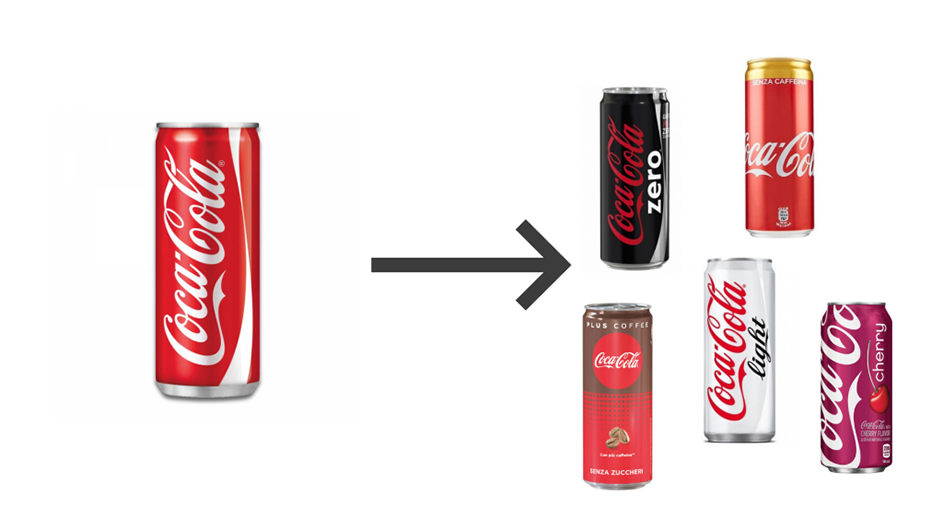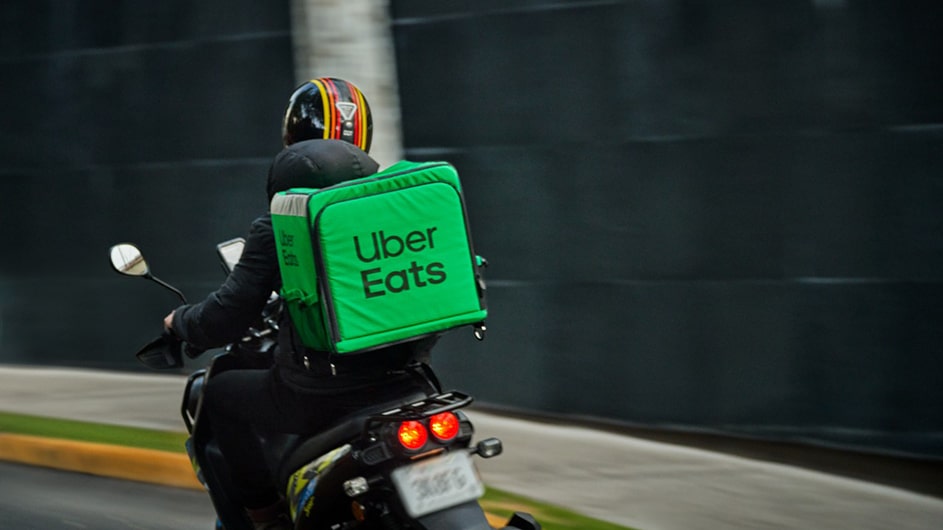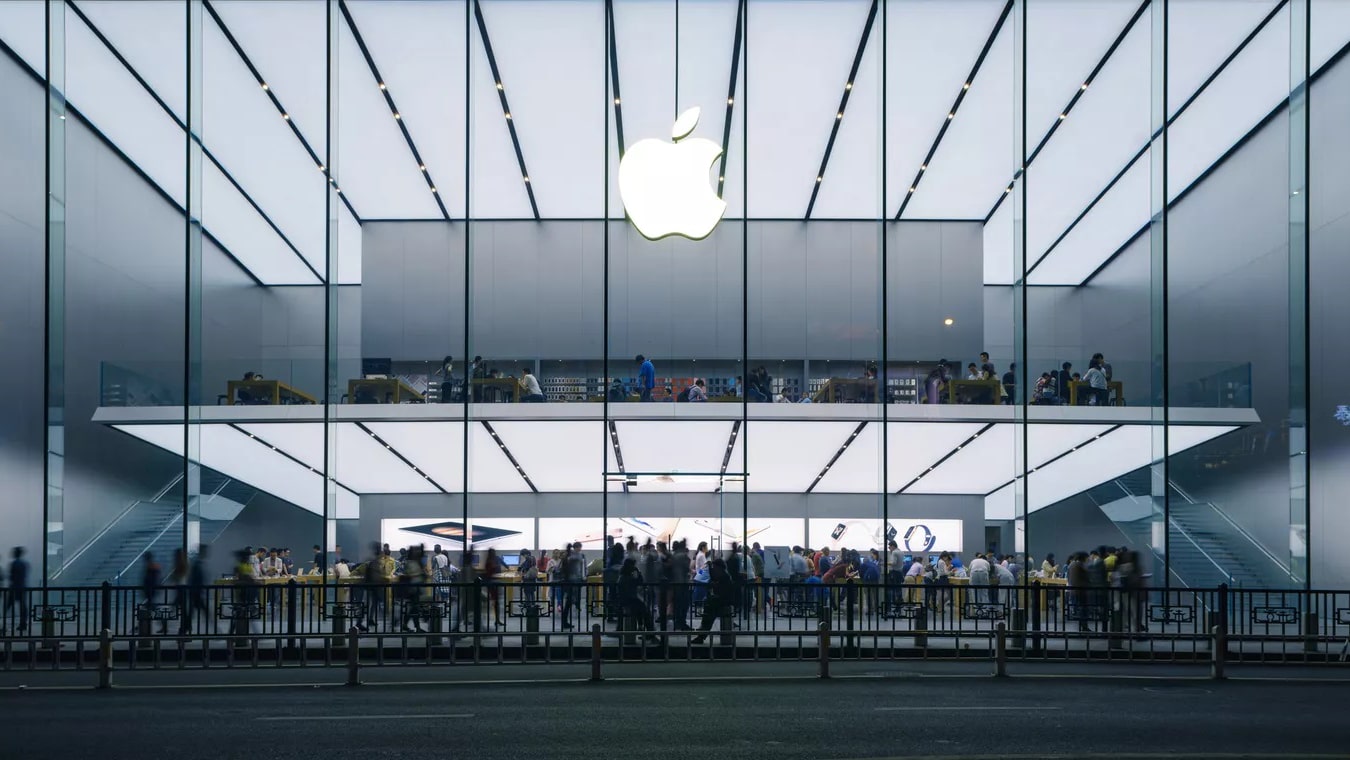
- What Exactly is the Definition of Brand Extension?
- Critical Considerations to Execute a Successful Brand Extension
- What Are the Benefits of Successful Brand Extension?
- What Are the Disadvantages of Brand Extension?
- 5 Common Types of Brand Extension
- 6 Real Examples of Brand Extension
- An Overview of Apple's Exemplary Brand Extensions
- Not All Brand Extensions Are Successful Necessarily!
Have you ever thought of expanding your brand? Exploring new markets, reaching new customer bases, raising brand recognition and awareness, etc.
You are not the only business that dreams of growing. Over the years, small and large companies have tried to extend their presence in various aspects by producing new products and getting more customers.
As a result, there is a marketing branch called brand extension. Brand extension term refers to the approaches and strategies brands use to get bigger and increase their market share.
As implied by the title, we are going to cover everything about this concept in this blog.
Let’s start by defining this concept!
What Exactly is the Definition of Brand Extension?
It is a marketing strategy we will discuss, and it is suitable for those brands that already have established a well-known name.
When a company has a wide range of audiences and high brand awareness, it tries to sell a new product or series of products under the same brand’s name. This is known as a brand extension strategy.
They also call this approach brand stretching, as the parent brand is trying to stretch its presence, products, and even the base of customers it is selling to.
But why? Why not introduce a new brand and sell the new offerings under that newly created name? Because the established brand is well-known among the target audience, it is more likely to grab attention towards the latest products. This is the reason!
You may already be familiar with several brands that began their journey by producing one or more products and services. They have since expanded to dominate multiple markets with various goods. Apple, for example.
These companies are successful examples of brand extension strategies, and we will delve into some of them further in this blog. Additionally, we will dedicate a section to examine Apple’s brand extension procedures, given their successful track record.
To summarize, Famous brands utilize their good reputation and fame to introduce new offerings to the market. They try to pass the fame to the unexplored products, helping them to gain more awareness and become more popular at the time of introduction, paving the way to increase sales.
These new offerings may be related to the old ones they were selling before or may not be relatable to them at all!
However, not all brand extensions necessarily thrive. In the next part, we will examine some tips to achieve what you desire with your brand stretching plans.
Critical Considerations to Execute a Successful Brand Extension
Pay attention to the following points for a successful brand extension.
Make Sure Everything Aligns with Your Brand Image

As we said above, some brands may introduce products unrelated to their previous offerings, and many do that. This approach is often ineffective! At least most of the time, brand stretching is likely to fail in such cases.
New products that you will tell the public about must completely align with the brand image you have already created.
Remember that the goal behind the brand extension is to inherit the value and fame of the parent brand. This makes introducing new goods easier.
Therefore, the new products must be related to other products that the brand is already selling.
In other words, consumers must quickly understand the relationship between new offerings and the brand whose name they are using to grab the audience’s attention.
Additionally, the new offerings must be able to transfer the original brand’s strengths.
So, especially if it is the first time you are going to opt for brand stretching, start slow. Choose completely relatable products to extend your presence and offerings. Choosing goods that align with your brand identity is strongly advised, or you will fail badly.
Conduct Comprehensive Market Research Beforehand
Do you know what your target audience needs, or do you want to do brand extensions based on assumptions?
Understanding consumer needs is critical before strategizing brand extension.
Research and identify gaps in the market; what products can you offer related to your branding and other goods you are already selling? Are there any other competitors selling the same stuff? Does your target audience need those products? Do your customers desire what you are going to add to your offerings?
The victorious brand extension requires a reasonable understanding of the market and its competitive landscape. You can’t guess and act! Conversely, you must gather information and make your decisions accordingly.
Craft a Strategic Plan to Boost the Visibility of Your Latest Offerings
Combine the parent brand’s message with the values your new offerings provide for the target audience. Plan a well-thought strategy for effective marketing, using proper channels to reach potential customers in the best way possible.
Your new products must have their own identity while totally aligned with the original brand’s image, as we mentioned earlier in this blog. Consider this critical point in all your marketing efforts.
Never underestimate the power of transparency and its positive influence on your target audience.
Point to the connection between your new offerings and the parent brand in a way that consumers easily understand that a well-established brand they trust is offering these new products.
Clearly communicate value propositions and advantages of the unexplored goods to attract more paying buyers and imply a successful brand stretching.
Only Offer High-Quality Products

Chances are you put so much effort into building a positive brand equity. Obviously, you don’t want to ruin people’s positive perception of your business. Thus, avoid offering low-quality products and services as part of your brand extension strategy. That is a total failure that causes harm to your brand’s image.
Keep the high standard you achieved before, and offer products that can meet your target audience’s expectations.
Even after producing new goods, stay alert to identify probable problems as early as possible and plan to solve those before they raise criticism towards the original brand.
Keep an eye on market feedback and apply necessary changes. If you have already conducted perfect market research, the final offering may be closer to what they need and desire. However, there might be suggestions that you should listen to and optimize the whole brand extension process accordingly.
Now, let’s explore the advantages of brand extension.
What Are the Benefits of Successful Brand Extension?
Successfully executing brand stretching can result in taking advantage of the following benefits.
Expanding Market Share and Increasing Revenue

Introducing new products among your offerings can attract new customers who are not yet familiar with your business. As a result of your latest offerings, they will become accustomed to your brand, increasing your market share.
Additionally, the results of brand stretching enable you to reach new demographics and individuals.
Furthermore, expanding market share leads to an increase in sales. As you grab more potential customers, chances are that the sales numbers will go up, and evidently, you can expect more revenue.
Moreover, you can look for cross-selling and up-selling opportunities. People who buy new offerings may need the former goods you are already selling and build your reputation around them.
Enhancing the Current Brand Image
Until this point, we have learned that brand extension is the practice of transferring a reputable brand’s credit to a new product or set of products, aiming to attract more attention to new offerings quickly.
While that is correct, successful brand stretching can also benefit the parent brand, enhancing its picture in people’s minds by introducing another high-quality product.
In the previous section, we discussed increasing market share and revenue as one of the advantages of brand stretching. When more people know the brand, brand recognition and awareness will increase. They are resulting in solidifying the brand’s presence in the market.
The more successful the brand extension process, the greater the enhancement of the brand image—a surprising outcome, isn’t it?”
Cost Saving Due to Inexpensive Marketing

Compared to launching a new brand from the zero phase, brand extension helps you to decrease expenses and leverage the fame of the parent brand to gain attraction.
People already know the brand, and you don’t need to put effort into increasing brand awareness.
Therefore, brands can save a lot when trying to expand their presence with a brand extension strategy. Instead, businesses can focus on promoting the new product to the target audience, trying to evoke their emotions and cultivate interest in them. Simply said, attracting more customers with higher ROI is possible when implying brand stretching.
Additionally, you don’t have to invest in forming product lines and distribution channels, as you probably have them for products you were selling up to this point.
Aside from costs, you will save noteworthy time needed to take care of these matters.
Improving Brand Loyalty
More loyal customers is what every business, regardless of their field and size, thrives for! These devoted fans are ambassadors who promote your brands, products, and services without expecting a paycheck. Truly nice!
Brand extension and offering a more comprehensive range of products and services will increase customer satisfaction and loyalty. Wondering why? The answer is simple.
The more relatable products and services your brand offers, customers will find you as a one-stop solution that caters to most of their requirements.
People prefer to buy all they need from trusted brands that have already consumed their products and services.
Resurrecting Forgotten Brand
Unfortunately, people will forget your brand easier than you can imagine. The reality is that you are not their family members, and when a better alternative shows up, they switch to it, and you will become a faded memory in their minds.
Brand stretching is a great approach to revive forgotten brands, grabbing attention again and winning back the lost target audience.
Offering new products and services aligned with your brand identity breathes life into your flagging business.
As we said above, you can expect new customer segments if everything goes well and according to your plans. Besides attracting the old ones again, reach new potential customers who will find your brand a good choice for satisfying their needs.
However, it’s essential to consider the potential drawbacks of brand extension, which we will discuss in the following section.
What Are the Disadvantages of Brand Extension?
If the process of brand stretching goes wrong, your business may encounter these cons.
Losing Your Brand’s Identity

Creating the brand image you desire demands hard work and takes time.
After a while, if everything goes as planned, you can achieve this goal, build the brand identity you have dreamed of, and find it suitable for your business.
One mistake can ruin everything and put all your efforts to waste! That one mistake may be a poor brand extension.
As we said above, proper brand stretching will enhance your brand’s image and pave the way for other advantages. On the other hand, failure in this approach will cause harm and take down all you have built over time.
Becoming Too Generic
Although many industry leaders expand their presence in various markets through brand extension, this method won’t work the same for all businesses.
Planning to set your footprint in too many markets will confuse consumers, and they may struggle to identify your primary industry.
Experts call this situation brand dilution, as seeing your brand everywhere in diverse fields makes people tired.
Sometimes, less is better! Therefore, prioritize products closely aligned with your existing offerings, as previously suggested.
Don’t copy what big brands like Uber do; chances are your brand is not as huge as theirs.
Getting Into Competition With Your Own Business!
One of the most detrimental effects that brand extension may cause is sales cannibalization!
Presumably, brand extension aims to expand market share and compete with other brands. However, again, poor strategy may lead to bad outcomes. Specifically, the new products may compete with the ones you have been selling for a while. Well, that is different from what you expected. Isn’t it?
Emphasizing the importance of releasing relatable products and services, remember that new offerings must be distinctive from the products you are already selling. Otherwise, the further products will rival the older ones, and in the best scenario, your sales number will stay the same if it does not drop significantly!
To summarize, internal competition within a company is another imaginable disadvantage of brand stretching that your business faces if the process deviates from your intended strategy.
As promised, we will examine some successful examples alongside some letdowns of brand extension in this blog. But before delving into those case studies, let’s first explore the different types of this marketing strategy.
5 Common Types of Brand Extension
Like any other marketing strategy, you can execute brand stretching in several ways, hoping to take advantage of its pros by adequately planning and implementing your strategy.
In this part of the blog, we will examine five common types that both small and large brands utilize to expand their brand in various aspects.
1.Line Extension
There is no doubt that Line Extension is the most common type of brand extension. In this approach, which many brands choose, the business introduces a new product similar to the existing offering.
In other words, the new product or new variations of products fall into the same category as the previous goods the brand sells.
As a result, marketing becomes more straightforward. The brand can access potential buyers and offer them the new products they will likely need and be satisfied with.
For example, Coca-Cola, a well-established brand in the drinks industry, can introduce drinks with new flavors, knowing that the target audience they are in a relationship with will attend to the new product.

Another example is Sony, which is making gaming consoles known as PlayStation. They offered portable consoles alongside their primary product, which at that time was PS3.
2.Complementary Product Extension
Similar to the previous type, line extension, in this approach, the brand will introduce new offerings relatable to existing goods and complement them.
Successful execution of this type leads to increased customer satisfaction, which is essential for the brand’s long-term success.
Take a hypothetical florist company, for example. They dominate the inside plants market and have a well-known name among competitors. What do plants need? Yes exactly! They need pots.
Thus, this brand can plan to execute a complementary brand extension. It can design and make unique flower pots that align with its brand identity and offer them to current customers.
3.Customer Base Extension
As the name suggests, this type of brand extension solely focuses on current customers or a specific demographic among them. The goal is to produce more items to cater to their necessities and turn them into loyal customers, as discussed earlier in this blog regarding their benefits.
Companies that take this approach will go for goods and services beyond their dominant categories but still care for the needs of their chosen customer base.
For example, a furniture store can expand its offerings by selling carpets or other decorating materials.
4.Company Expertise Extension
If your brand demonstrates expertise in a specific industry, you can set strategies to capitalize on Brand Expertise Extension.
In this case, a brand known as a professional in any field will plan to introduce other products and services in areas where consumers recognize their expertise.
Uber is an excellent example of this brand extension type. They became an industry leader in transportation by building an outstanding online taxi business. Subsequently, they expanded their offerings to include food delivery, which is directly related to conveyance.

5.Brand Prestige Extension
Previously, we emphasized the importance of introducing relatable offerings with brand extension to increase the chance of success.
However, in some rare cases, brands choose to go beyond and diversify their product portfolio.
Note that brands that have built a luxurious image primarily opt for this type, leveraging their fame and prestige to try their luck in various categories.
Several examples of brands using this approach are available in the real world.
For instance, Montblanc, known for producing luxury watches, extended into the jewelry industry.
Now is the time. Let’s dive into some real examples of successful and unsuccessful brand extensions.

6 Real Examples of Brand Extension
As said above, brand extension would not necessarily be successful, and in case of poor execution, there is a risk of disastrous failure.
We will examine successful instances first.
Successful Brand Extensions
Among all the prosperous brands in extending their business, we find these three to be the most noteworthy.
- M&M: M&M is a widely recognized chocolate brand whose foundation dates back to 1941. This favorite sweet brand leverages its brand identity to expand its presence in the market by offering new flavors and chocolate colors and occasionally collaborating with other well-known brands like Snickers. So, regarding brand extension, M&M achieved victory and accomplished its goals.
- Nike: Phil Jones was a runner and believed running would heal people. Therefore, he founded Nike and started producing high-quality sneakers. However, Nike is much more than that now! After establishing a foothold in the market, Nike did several brand extensions, dominated various markets like clothing, fitness apps, and fitness equipment, and signed contracts with athletes worldwide, from global football icon CR7 to tennis legend Rafael Nadal.

- Dove: Dove started its career by producing washing soaps. It garnered attention for the brand by offering high-quality soaps for people who love to be clean and care about the quality of cosmetic products they use. When it became well-known, authorities in the firm decided to expand the products and adopted the Line Extension approach to extend the brand, and they were truly successful!
Most people often ignore numerous stories about failed ones. However, wise individuals would acknowledge them and learn from their mistakes.
Failed Brand Extensions
You are going to read some examples of the most ruinous brand extensions.
- Harley Davidson: With its unique bikes, the famous motorcycle manufacturer entered the world of perfumes in the mid-90s, which was a huge mistake. Their goal was to emphasize their brand image: rebellion and freedom! However, everything went wrong! Customers criticized the new products because they didn’t match the brand’s image. Accordingly, the company’s executives abandoned the whole project shortly after.

- Pepsi: Usually, the second in line in the cola industry, Pepsi, has some experience in executing brand extensions that did not go as planned. Once upon a time, this brand decided to extend its products by offering healthy drinks that were significantly different from their original cola products. People recognized Pepsi with its black cola and didn’t welcome the new products, which were as crystal as water and tasted totally different.
- Colgate: The famous oral care company Colgate has several successful brand extensions on its record, but there have been failures, too. They tried their luck in the food industry and experienced their downfall firsthand. They offered frozen food, which conflicted with Colgate’s brand identity. Their customers are the people who care about their dental health. Therefore, it seems predictable that they avoid such offerings!
Do you feel a name needs to be added? Why not examine Apple’s brand extension, as it is one of the most successful brands in this strategy? The reason is we will dedicate a separate section to this matter.
An Overview of Apple’s Exemplary Brand Extensions

This magnificent brand has had several successful brand extensions throughout history. Thus, many sources reference Apple for teaching and examining the essence of brand stretching strategy.
It started with the production of home computers in the 1970s. As time passed, Apple became more famous and grew its customer base, gaining a reputation and credibility.
The late Steve Jobs and his team strategically took advantage of the brand image they created to extend Apple and dominate various markets slowly, and indeed, they did it correctly!
One important note is that Apple has always stayed loyal to its core branding message. They have focused on innovation and creating cutting-edge, superb-quality technology devices from the beginning and still do that continuously.
Besides that, Apple always prioritizes user experience by offering minimalist designs, which they consider in almost every device and service they provide for consumers.
Many experts believe Apple’s success in this strategy is because it always understands market trends and knows what its target audience demands.
In a flashback to the first years of this century, we can see Apple’s brand extension footprints. Those years were the time of digital audio files. It was a revolution in that people could listen to their favorite tracks digitally. However, the market lacks a useful device for this matter.
Hence, Apple introduced iPods, which made a buzz and forever changed the listening habits of listening to music. This device was ultimately in alignment with Apple’s brand identity. Simple, minimal, user-friendly, and undoubtedly unique!
A few years later, when smartphones became the digital world’s hot trend, Apple authorities again grasped the requirements of their target audience in the best way possible and upgraded iPods, which were an actual thing until that time.
The result of this upgrade was the launch of the first version of the iPhone. The progenitor of modern smartphones, people eagerly line up to purchase the latest version every September to October.
Until now, you’ve learned about two successful brand extensions executed by Apple. But there is more!
Three years after the introduction of the first iPhone, Apple got the feeling that people would probably need something between smartphones and laptops. This was the core idea behind the invention of the iPad, which many assume is the best series of tablets ever made.
Note that this vast tech brand kept producing different kinds of computers, known as Macs, all through this time, expanding their products, attracting more customers, and dominating new markets.
Since then, they have continued their fabulous strategy, doing more successful brand stretchings.
Considering the people’s interest in digital accessories, they started creating smart watches, AKA Apple Watch, in 2015.
Now, they offer Apple TVs, various TV series such as Hijack, Airpods, Home speakers, and a diverse range of software, from their exclusive operating systems for Macs and iPhones to a music streaming service named Apple Music.
That is why Apple’s brand extension strategies are top-notch and taught in reputable marketing institutes as a successful example.
Until now, we have covered everything you should know about brand stretching—it’s time to wrap up.
Not All Brand Extensions Are Successful Necessarily!
The most important lesson we should learn from various examples of brand extension is that inadequate execution can lead to failure. So, not every brand can benefit from expanding its presence in multiple aspects.
In this blog, we defined the meaning behind the term “brand extension” and explored its pros and cons. Provided tips for success in implementing this marketing strategy and cited examples of victorious and failed brand stretching, another name for extending the brand.
Also, we discussed different types of brand extensions, offering a framework for making informed decisions tailored to your brand’s unique circumstances and increasing the chance of success. Need help navigating the complexities of brand extension for your business? Our team of experts is here to guide you. Contact us today to discuss your specific goals and develop a winning brand extension strategy.
Nikan



